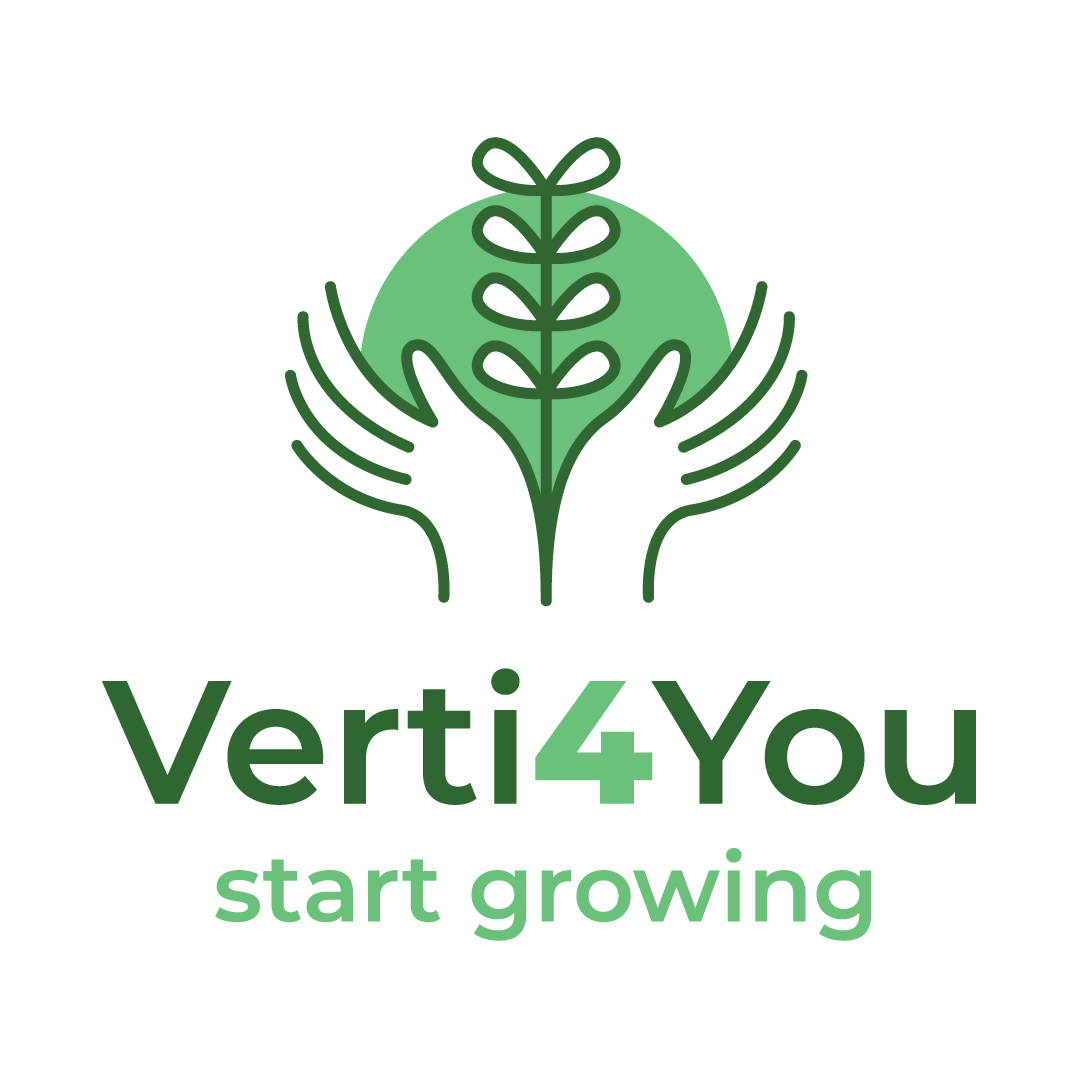Result 1 (PR1) – Digital Training Pack on Vertical Farming
The Digital Training Pack for Vertical Farming (DTP4VF) was designed for youth, educators, and stakeholders, as a structured knowledge on vertical farming. Initially planned as a 150-page interactive manual, the final result exceeds expectations, expanding into a 437-page in-depth vertical farming guide, enriched with technical insights, case studies, and applied research from the consortium partners.
The aim of the handbook was to make modern horticultural technologies accessible, particularly for NEET youth and those with fewer opportunities. The original concept proposed an interactive, modular training pack, integrating technical elements on vertical farming, automation, greenhouse systems, integrated pest management, and workplace safety, and also including digital tools such as quizzes, video tutorials, and virtual learning exercises. The online available version extends beyond these initial projections, delivering almost a reference manual that could both be used by different categories of interested persons, from kids, youth, students and also provides actionable advises for real-world implementation.
The handbook covers a large spectrum of vertical farming technologies, detailing hydroponic, aeroponic, and aquaponic systems, as well as the automation techniques required for optimizing growth conditions. Additionally, it presents microgreens cultivation, sustainable farming models, and urban agriculture innovations, offering structured guidelines on designing and maintaining vertical farming modules. A section is dedicated to business development, making the connection with the second project deliverable, introducing the young entrepreneurs subjects as financial planning, market analysis, and sustainability strategies, vertical farming enterprise. The final version of the training pack has expanded content and use advanced technical depth. Initially planned as a document with basic visual elements and learning quizzes, the handbook now includes detailed technical schematics, high-quality illustrations, and real-world case studies from partner countries. It integrates the latest discoveries of research on automation in agriculture, environmental control systems, and energy-efficient farming solutions.
One of the strengths of the vertical farming manual is its transferability across different educational and training sectors. The material can be used as a resource by young entrepreneurs, but also can be seen as valuable tool for universities, vocational training institutions, non-formal education programs, and municipal agricultural initiatives. Designed to be accessible online, can be accessed also offline, and it facilitates knowledge dissemination in both urban and rural settings, ensuring that learners from diverse backgrounds can have access to a complex study material.
The first chapters focus on the Uderstanding Vertical Farming, explaining vertical farming evolution from traditional agriculture to modern urban and indoor farming systems. The chapter emphasizes the importance of vertical farming in addressing food security, urbanization, and environmental concerns. Unlike the initial proposal, this chapter provides a much deeper analysis of historical developments and technological advancements. Also it covers the various systems used in vertical farming, such as hydroponics, aeroponics, and aquaponics and explains the principles, advantages, and limitations of each system, along with practical guidelines for their implementation. The content offers more detailed explanations and visual representations than anticipated.
The second section is dedicated to the Microgreens cultivation, highlighting their nutritional benefits, market potential, and step-by-step guides for successful growth. This section, although briefly mentioned in the proposal, has been expanded significantly, providing practical information and case studies that enhance its usability.
The third chapter presents the Vertical Production Systems, with all the technical aspects of setting up and operating vertical farming systems – automation, environmental control, lighting, and irrigation. The chapter includes detailed diagrams, flowcharts, and step-by-step instructions, which marks a great improvement over the original planned content, which only referenced automation and production systems.
The fourth chapter is dedicated to Robotics in Vertical Farming, introduces the use of robotics and advanced technologies in vertical farming, focusing on how automation can enhance productivity, efficiency, and scalability in controlled environment agriculture. Various robotic systems are described, as those used for seeding, monitoring, harvesting, and packaging crops, but also describe the automated climate control systems, and data management tools for monitoring crop performance.
The fifth chapter provides practical guidelines for Setting-up vertical farms. It covers key factors for location selection, utilities and infrastructure, designing farm layouts, and preparing productive areas. The information is offering in-depth instructions, flowcharts, and layout diagrams.The sixth chapter summarize the Production Materials required for building vertical farming systems. It presents how to do the selection of vertical farming systems, components and assembly, irrigation and lighting systems, climate control, growth medium, and monitoring automation. The detailed guidance offered in this chapter far exceeds the initial expectations.
The chapter seven presents detailed information on Plant health in vertical farming, dealing mostly with the Integrated Pest Management (IPM) principles and and methods. It offers insights into pest prevention, disease control, and chemical-free solutions. This chapter fulfills the initial objective of providing essential guidelines for safe and sustainable farming practices, but with far more comprehensive content than expected.
The eight chapter describe The Vertical Farming Business, with information on business planning, marketing, funding, and creating a viable business model for vertical farming. The initial proposal briefly mentioned this aspect, but the final version offers a well-rounded guide that addresses not only business creation but also long-term sustainability and scaling.
The ninth chapter outlines the Verti4You roadmap, providing a strategic plan for implementing vertical farming systems across various regions and educational contexts. The roadmap also includes recommendations for policy-makers, educators, and entrepreneurs, making it a versatile tool for further dissemination and transferability.
The final chapter Vertical Farming Models and Suppliers in Partner’s Countries presents various vertical farming models and the suppliers available within the partner countries – Romania, Bulgaria, Greece, and Italy. It provides practical insights into the availability of technological resources, construction materials, and farming modules essential for developing vertical farming systems, but also the regional differences, offering useful recommendations for sourcing equipment and building partnerships with local suppliers. Unlike the original proposal, this chapter adds bring more value by enhancing the transferability potential of the handbook, making it highly applicable to different educational, agricultural, and entrepreneurial contexts.





